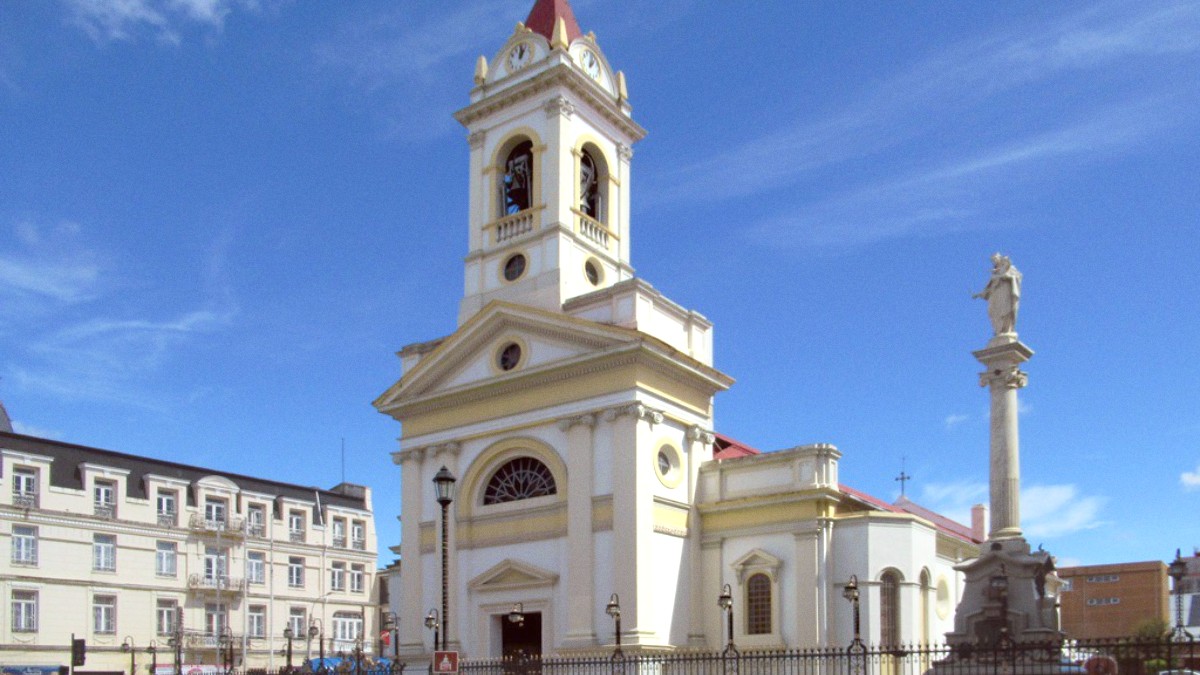
Southern Patagonia, Chile
This guide helps you plan a memorable trip, ensuring you make the most of your time in this remarkable Chilean city. Prepare for a place of both wild nature and fascinating culture, a destination that captivates every visitor.
Punta Arenas boasts a rich and complex history, deeply tied to its strategic position. The city began as a penal colony in 1848, established by Chile to solidify its claim over the Strait of Magellan. Before the Panama Canal opened, the Strait was a maritime route for global trade and exploration.
During the late 19th and early 20th centuries, the city saw rapid growth. It transformed into a bustling hub for sheep farming, an industry that brought immense wealth to the region, and also for coal mining. This economic boom attracted a wave of European immigrants, whose influence remains visible today in the city's architecture and customs.
Approximately 130,000 residents call Punta Arenas home (2023 estimates), making it a medium-sized city with urban amenities and a welcoming feel. The city's economy relies heavily on port services, serving as a logistics hub for shipping and Antarctic-bound vessels. Tourism is a major driver, attracting visitors from around the world. Fishing, sheep farming, and oil and gas extraction also contribute significantly.
Punta Arenas experiences a subpolar oceanic climate (Cfc), meaning cool temperatures year-round, strong and persistent winds, and variable precipitation. Be prepared for all four seasons in one day! The geographical setting defines much of the travel experience, from the weather you encounter to the types of activities available.
Established as a penal colony, solidifying Chilean claim over the Strait of Magellan.
Rapid growth due to sheep farming and coal mining booms.
Important maritime route and provisioning stop for global trade.
Attracted European immigrants, shaping the city's unique culture.
Became a critical port for early Antarctic expeditions.
Punta Arenas is a port city celebrated for its lively history, distinct Patagonian culture, and its role as a base for Antarctic and regional excursions.
Explore the historic Plaza Muñoz Gamero, the Municipal Cemetery known for its beauty, and the Nao Victoria Museum with its full-scale ship replica. Take an excursion to Magdalena Island to see vast penguin colonies or visit Fuerte Bulnes for historical insights and coastal views.
Punta Arenas is a launchpad for incredible journeys. It connects travelers to Antarctica, the majestic Torres del Paine National Park, and the rugged landscapes of Tierra del Fuego. Its position makes it a natural starting point for deep exploration of the Patagonian region.
You gain a sense of the city's character before you even arrive, setting the stage for your adventure.
Choosing the right time to visit Punta Arenas makes a difference in your experience. The city's subpolar oceanic climate offers distinct seasonal patterns, each with advantages and disadvantages.
Punta Arenas experiences cool temperatures throughout the year. Strong winds remain a constant, sometimes making the air feel colder than the thermometer indicates. Precipitation occurs year-round, often as light rain or drizzle. Snow is common in winter.
Best weather for activities, all tours available, peak wildlife viewing, long daylight. Expect higher prices and crowds.
Fewer crowds, moderate prices, suitable weather for many activities. More unpredictable weather and less frequent tours.
Significantly lower prices, few tourists, unique winter experiences. Limited daylight, very cold, some attractions may be inaccessible.
Plan your activities according to the seasons for the best experience.
The official currency is the Chilean Peso (CLP). Exchange rates fluctuate. ATMs are widely available. Banks and "Casas de Cambio" offer exchange. Credit cards are accepted in most hotels and larger shops, but carry some local currency.
Budget: $85-$165/day (hostel, local food, bus). Mid-Range: $190-$390/day (mid-range hotel, restaurants, taxi). Luxury: $505+/day (boutique hotel, fine dining, private transfers).
Restaurants: 10% customary if service not included. Taxis: rounding up is common. Tour Guides: $5-$10 USD per person for half-day tours, more for full-day.
Traveler's Diarrhea (practice good hygiene, purified water), Sunburn and Windburn (high UV index, strong winds, use High-SPF sunscreen and Wide-brimmed hat), Hypothermia/Frostbite (dress in layers).
Punta Arenas has adequate facilities: Hospital Clínico Magallanes (public) and Clínica Magallanes (private) for emergencies. Pharmacies (Cruz Verde, Salcobrand) are widespread. Tap water is generally safe locally, but Portable water filters are an option.
Punta Arenas is safe for tourists. Petty crime, like pickpocketing, can occur in crowded areas. Do not display valuables. Use hotel safes. Be aware of surroundings. Chile is seismically active, but Punta Arenas has lower risk.